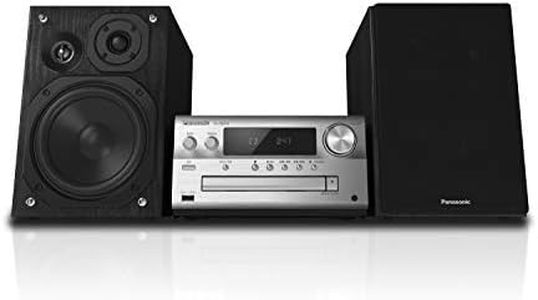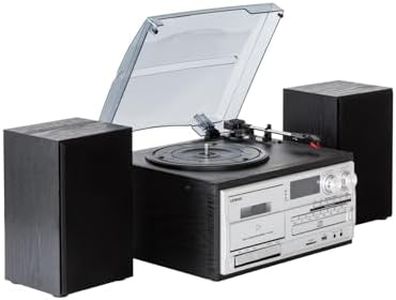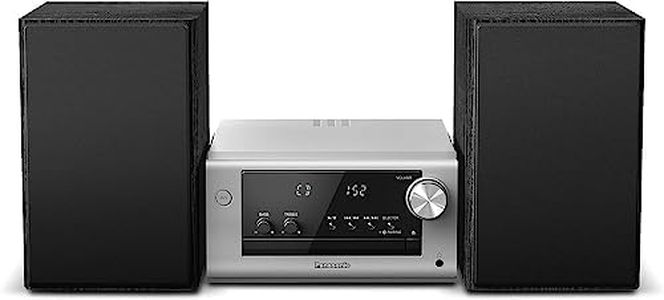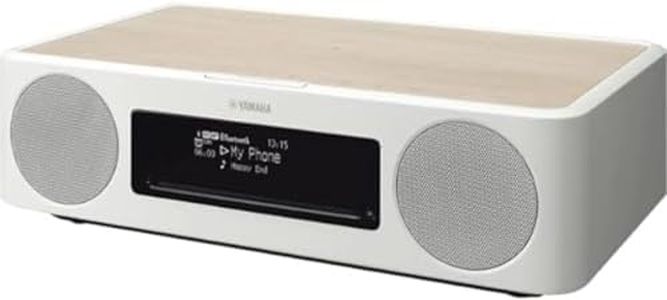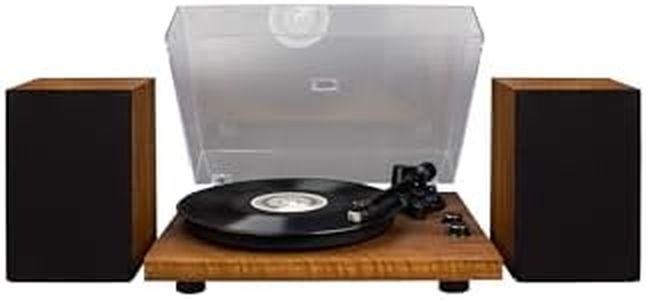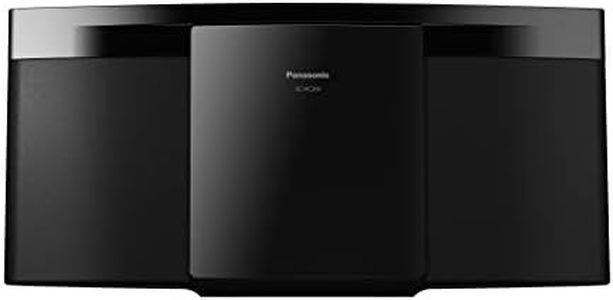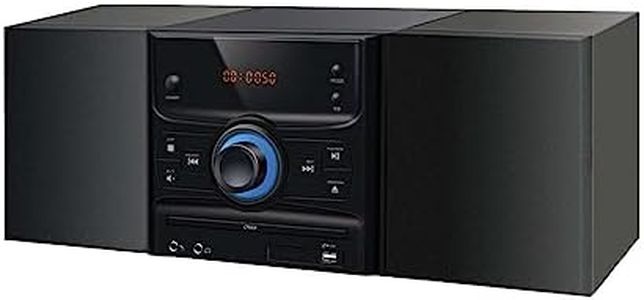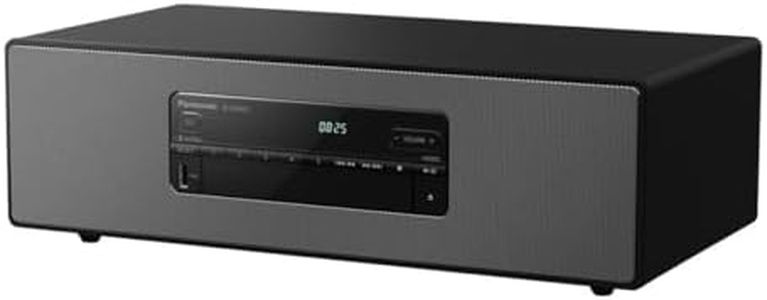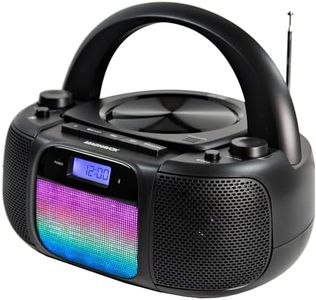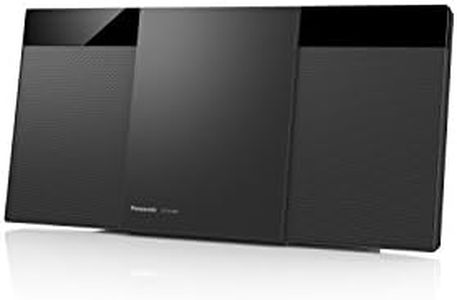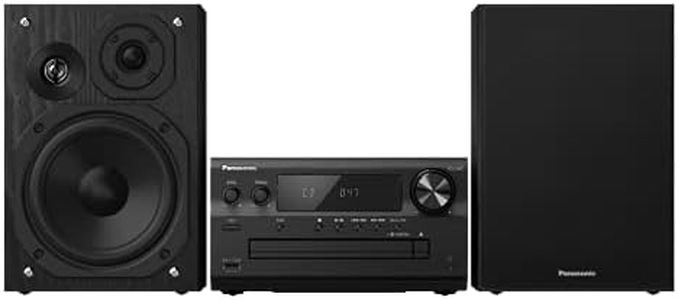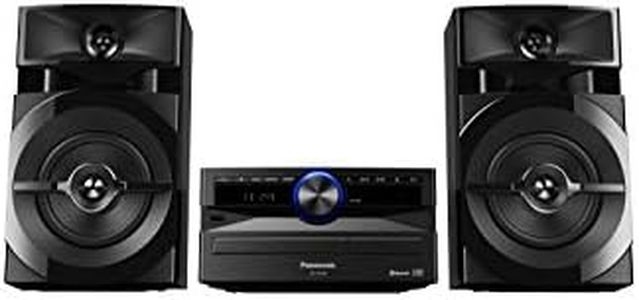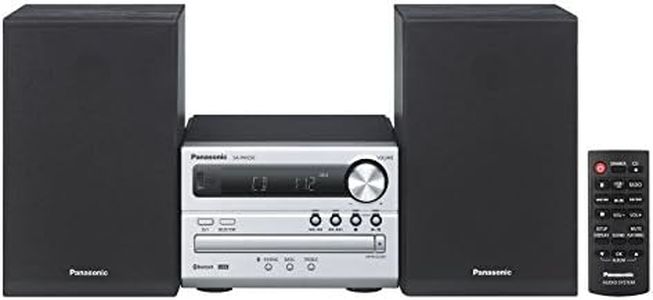We Use CookiesWe use cookies to enhance the security, performance,
functionality and for analytical and promotional activities. By continuing to browse this site you
are agreeing to our privacy policy
10 Best Shelf Stereo Systems
From leading brands and best sellers available on the web.Buying Guide for the Best Shelf Stereo Systems
Choosing a shelf stereo system can really change how you enjoy music, radio, and even your favorite podcasts right in your home or office. Since these systems are designed to deliver good sound quality without taking up too much space, it’s important to match one to your listening habits, room size, and the way you’ll use it. Before making a decision, think carefully about what you like to listen to, how loud or clear you want your music, and how you’ll be connecting your devices. This way, you’ll end up with a system that fits right into your lifestyle.Power Output (Wattage)Power output, usually listed in watts (W), refers to how loud and clear your shelf stereo can play music without distorting the sound. If you like to listen at moderate volumes in a small to medium room, a lower power output (like 10-30W per channel) is often enough. For bigger spaces or if you enjoy higher volumes, look for higher numbers, as more wattage can deliver fuller, more powerful sound. In most homes, you only need a moderately powered system, but think about your listening environment and how loud you want to play your audio before picking.
Speaker ConfigurationSpeaker configuration describes how many individual speakers are included and how the sound is delivered. Most shelf systems come with two main speakers (stereo), sometimes with a separate subwoofer for better bass. If you want a basic music setup for casual listening, a simple two-speaker arrangement will do the job. If you want richer sound, deeper bass, or plan to use the system for TV or parties, look for three-piece setups that include a subwoofer. Consider your room size—smaller rooms can be overwhelmed by too many speakers.
Connectivity OptionsConnectivity options include the ways you can play music from different devices, such as Bluetooth, USB ports, auxiliary inputs, or even CD players and radio tuners. If you mainly stream music from your phone or computer, having Bluetooth is important. If you prefer old-school CDs, make sure there’s a slot or tray for that. Multiple input options are useful if you like switching between sources or want to future-proof your system. Decide what devices or streaming services you’ll connect and look for matching ports or wireless features.
Sound Modes and Equalizer SettingsSound modes and equalizer settings allow you to adjust the speaker’s output to match different music genres or listening situations. Some systems have presets (like ‘rock’, ‘jazz’, or ‘voice’), while others offer manual adjustments to treble, bass, and midrange levels. If you like fine-tuning your sound or want flexibility for different activities (like parties vs. relaxing), look for a system with more customizable options. If you prefer simplicity, basic presets will be more than enough.
Size and DesignSize and design are about making sure the system physically fits your space and matches your personal style or decor. Smaller, compact units work well for bedrooms, desks, or apartments, while larger systems may be better suited for living rooms or shared areas. Think about where you’ll place the system and check measurements before buying. An appealing design can also make the system a centerpiece or help it blend in, so it complements your room.
